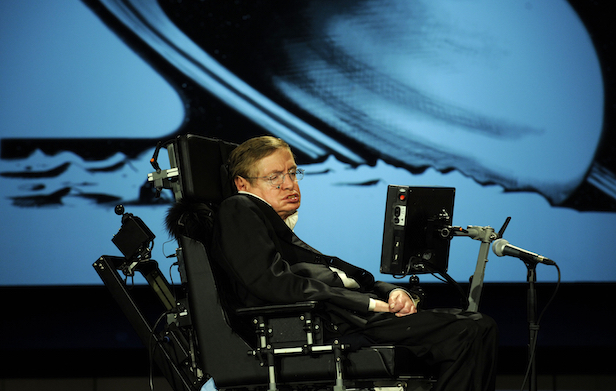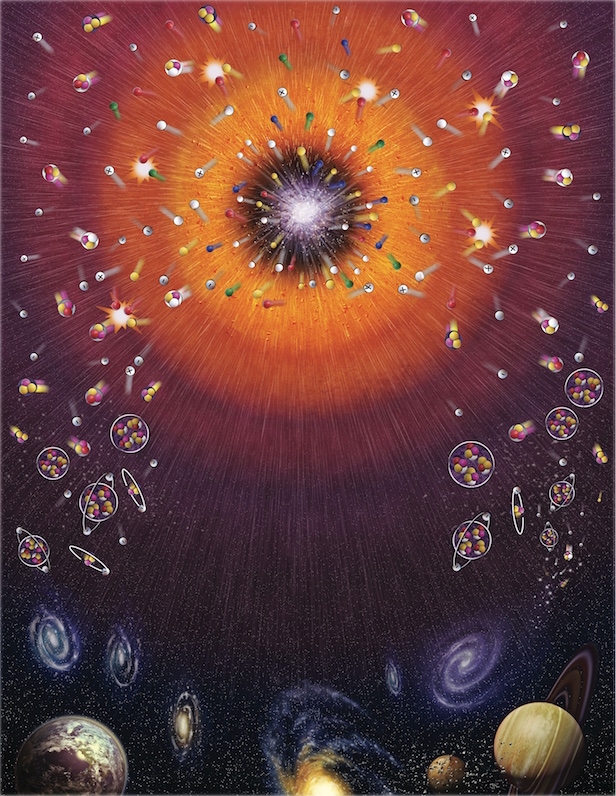Stephen Hawking’s final theory
This new theory challenges our current understanding of the universe and the initial Big Bang

Professor Stephen Hawking was professor of mathematics at the University of Cambridge. Image credit: NASA/Paul E. Alers
Professor Stephen Hawking’s last ever theory of the origin of the universe, in collaboration with Professor Thomas Hertog from KU Leuven in Belgium, has recently been published. The theory was submitted before the death of Professor Hawking and uses string theory to predict a much simpler version of our current universe, compared to other theories surrounding the events after the Big Bang.
Professor Hertog first announced the theory at a conference at the University of Cambridge, England in July 2017. This event was organised as a celebration of Professor Hawking’s 75th birthday.
Modern theories surrounding the Big Bang suggest that our local universe is the result of a brief, but enormous, burst of inflation. This brief burst lasted for a fraction of a second – quicker than it takes you to blink your eye – and the universe expanded at an exponential rate. It is commonly accepted that once inflation starts, in some regions it never stops. Quantum mechanics could cause inflation to be ongoing forever in certain regions in the universe, making global inflation eternal. The part of the universe we can observe is just a ‘hospitable pocket’ where inflation has ended and stars and galaxies can form.
“The usual theory of eternal inflation predicts that globally our universe is like an infinite fractal, with a mosaic of different pocket universes, separated by an inflating ocean,” said Hawking in an interview last autumn. “The local laws of physics and chemistry can differ from one pocket universe to another, which together would form a multiverse. But I have never been a fan of the multiverse. If the scale of different universes in the multiverse is large or infinite the theory can’t be tested.”
Hawking and Hertog now say that this account of eternal inflation is wrong. “The problem with the usual account of eternal inflation is that it assumes an existing background universe that evolves according to Einstein’s theory of general relativity and treats the quantum effects as small fluctuations around this,” says Hertog. “However, the dynamics of eternal inflation wipes out the separation between classical and quantum physics. As a consequence, Einstein’s theory breaks down in eternal inflation.”
“We predict that our universe, on the largest scales, is reasonably smooth and globally finite, so it is not a fractal structure,” said Hawking.

It is commonly accepted that our observable universe originated from the Big Bang almost 14 billion years ago. Image credit: Nicholas Forder
This new theory regarding eternal inflation is based on string theory, which is a subsection of theoretical physics that attempts to explain the entire nature of the universe, reconciling gravity, general relativity and quantum mechanics with tiny vibrating strings. Essentially, the universe is a symphony. In this interpretation of string theory, Hawking and Hertog describe the universe as a huge, complex hologram. The physical reality in certain three-dimensional spaces can be mathematically reduced to two-dimensional projections on a surface.
To take away the need for Einstein’s theory to describe eternal inflation, Hawking and Hertog developed a variation on the hologram concept to project the time dimension. In this new theory, eternal inflation is reduced to a timeless state on a spatial surface at the start of time. “When we trace the evolution of our universe backwards in time, at some point we arrive at the threshold of eternal inflation, where our familiar notion of time ceases to have any meaning,” says Hertog.
Hawking’s previous theory described a universe with no boundaries, suggesting that if you go back in time to the start, the universe will shrink into a closed sphere. This new theory takes a different direction, says Hertog, “Now we’re saying that there is a boundary in our past.”
The predictions about the global structure of the universe were made based on this new theory, and show the universe that emerges from this eternal inflation on the past boundary is finite. Not only is it finite, but also it is far simpler than the old theory of eternal inflation. This makes the theory more predictive and testable and, if future work confirms this, it would have incredible implications for the multiverse paradigm. “We are not down to a single, unique universe, but our findings imply a significant reduction of the multiverse, to a much smaller range of possible universes,” said Hawking.
In order to test out the theory on smaller scales, Hertog plans to use space telescopes to study ancient gravitational waves, which are ripples in space-time. Gravitational waves created at the exit from eternal inflation are theoretically the most promising ‘starting gun’ to test the model. Due to the expansion of the universe, the gravitational wavelengths would be too long to be detected by current LIGO detectors. Hopes currently lie on the future space-based gravitational wave detector LISA, built in collaboration of the European Space Agency and NASA.
Keep up to date with the latest reviews in All About Space – available every month for just £4.99. Alternatively you can subscribe here for a fraction of the price!




